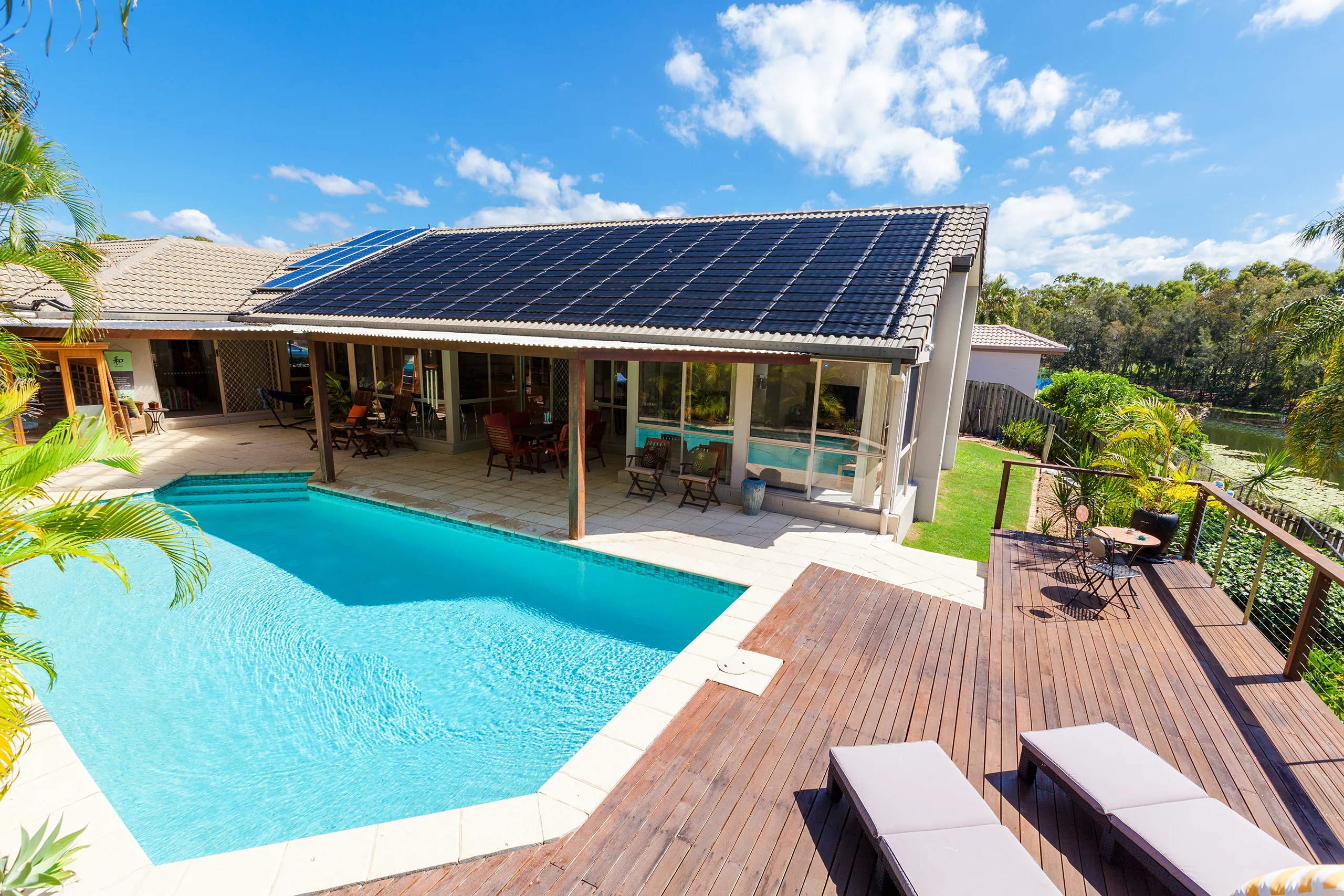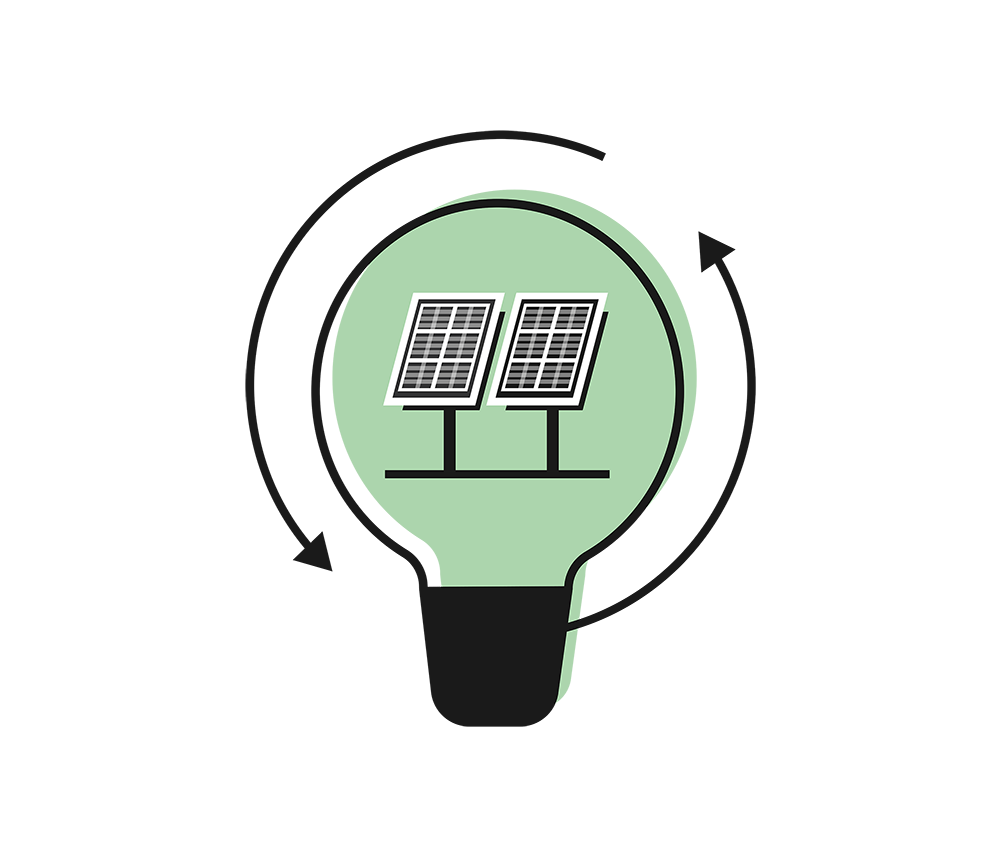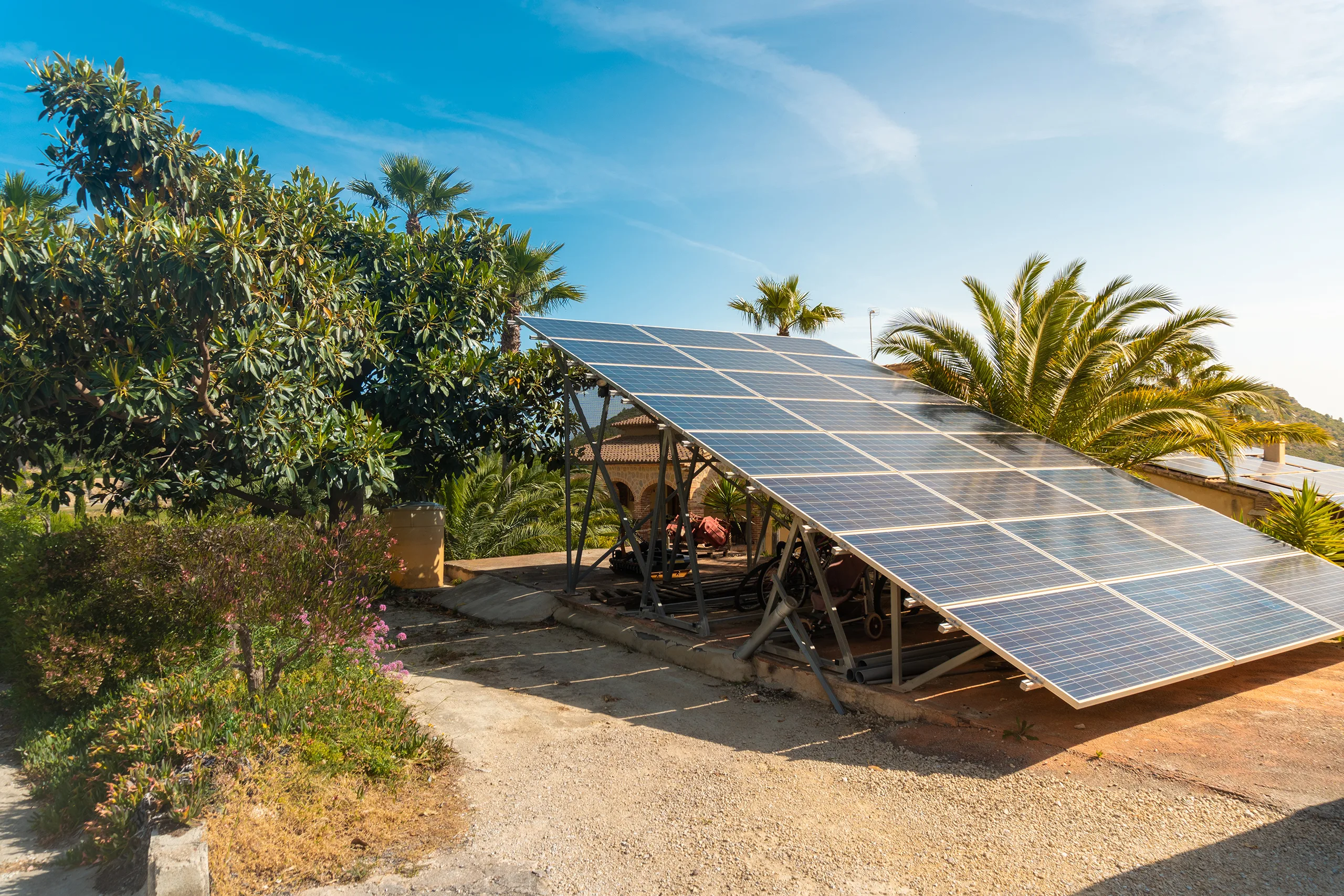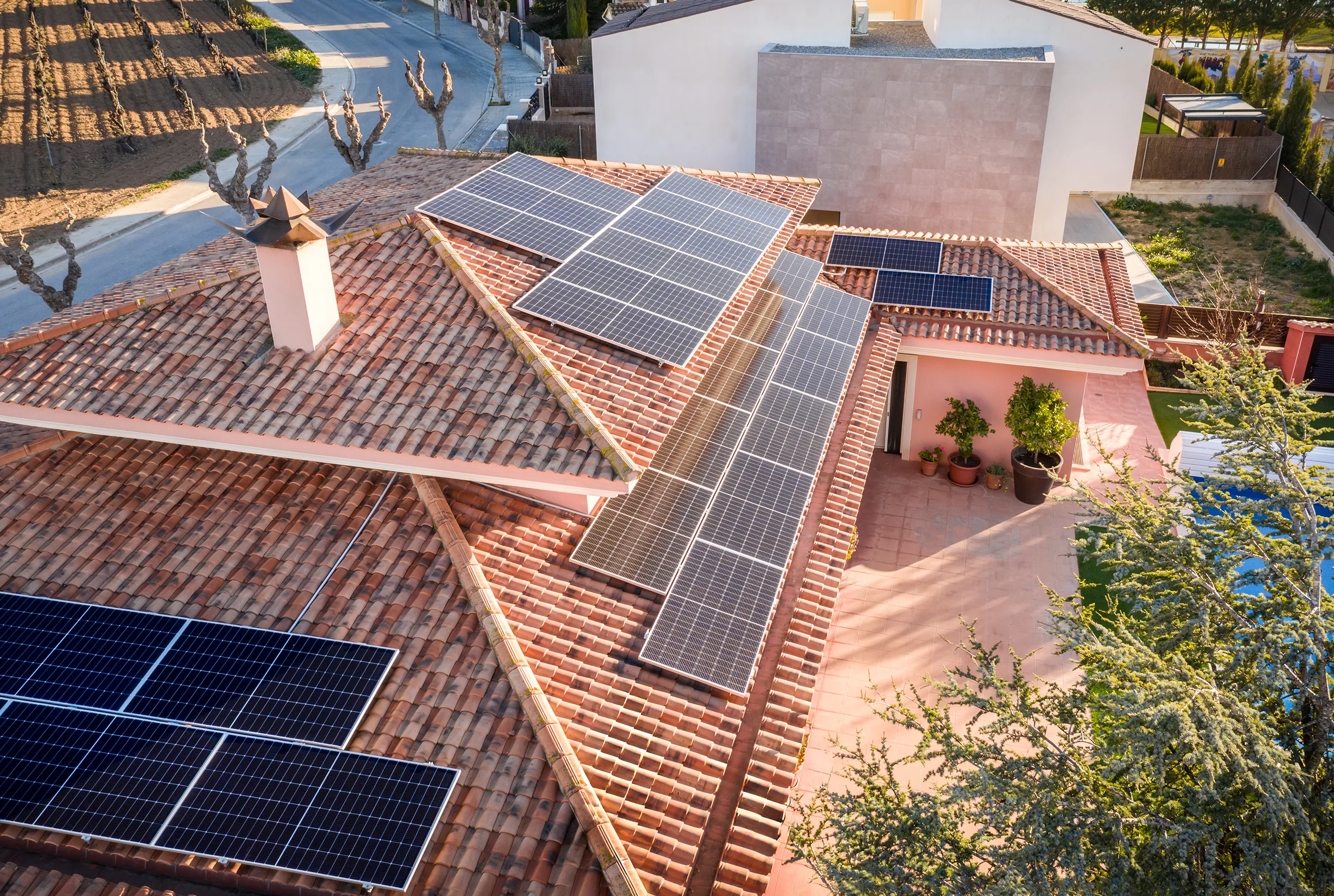Wall Boxes for Solar Carports
Your reliable partner in Spain
What is a wallbox
A wallbox is a special charging station for electric vehicles (EVs), usually mounted on a wall (hence the name “wallbox”). It is used to charge electric vehicles at home or at other locations such as company parking lots or public charging stations. A wallbox offers several advantages compared to charging from a conventional household socket:
Faster loading
Wallboxes typically offer a higher charging power than conventional sockets, resulting in shorter charging times. Depending on the model and installation, a wallbox can provide up to 22 kW of power, while a household socket often only provides 2.3 kW to 3.7 kW.
Security:
Wallboxes are specially designed for charging electric vehicles and therefore offer various safety features such as overcurrent protection, earthing protection and residual current circuit breakers (RCDs).
Additional functions:
Many wallboxes have additional features such as smart charging control, which allows the user to program or monitor the charging process. Some models also offer connectivity options such as Wi-Fi or Bluetooth connectivity for remote monitoring and control.
Comfort:
Charging at a wallbox is often more convenient than charging at a conventional socket, as the charging cable can be attached to the wallbox and does not have to be reconnected each time. In addition, some wallboxes allow contactless charging with RFID cards or apps.


Who needs a wallbox?
A wallbox is particularly useful for people who own an electric vehicle or are planning to purchase one. Here are some groups that could benefit from a wallbox:
Electric vehicle owners
People who already own an electric vehicle can benefit from a wallbox as it makes charging at home faster and more convenient than charging from a conventional socket.
People with limited access to public charging stations:
In regions where public charging stations are limited or far apart, a wallbox can provide a reliable option for charging electric vehicles.
Private property owners:
People who own private homes or condominiums often have the option to install a wallbox, making it easier to charge their electric vehicle at home.
Employers and companies:
Companies can install wallboxes in their parking lots to offer their employees the opportunity to charge their electric vehicles during working hours. This can help promote the adoption of electric vehicles and reduce CO2 emissions.
Tenants of private or commercial properties:
Tenants who live or work in rental apartments or commercial buildings can also benefit from a wallbox, provided the landlord approves the installation and the necessary infrastructure is in place.
Ultimately, anyone who owns an electric vehicle or plans to purchase one can benefit from a wallbox. It provides a convenient and reliable way to charge electric vehicles and helps promote the acceptance and spread of electromobility.
How much does a wallbox cost?
The cost of a wallbox can vary greatly depending on several factors, including the brand, model, power, functionalities and installation costs. Here are some general guidelines to get an idea of the cost of a wallbox:
Basic costs for the wallbox:
The basic cost of a wallbox can range from around €500 to €1,500, depending on the manufacturer and model. Simpler models without additional features are usually cheaper, while high-end models with advanced features such as smart charging control or connectivity options can be more expensive.
Performance and fast charging capability:
Wallboxes with higher power and fast charging capability can be more expensive than those with lower power. Models with a higher charging power of, for example, 11 kW or 22 kW are often slightly more expensive than those with a lower power.
Additional features and connectivity:
Wallboxes with additional features such as smart charging control, Wi-Fi or Bluetooth connectivity and remote monitoring functions can usually be more expensive than basic models without these features.
Installation costs:
The installation costs for a wallbox can vary depending on the location and local conditions. They usually include the costs for mounting the wallbox, the electrical installation and any necessary construction work. The installation costs can range from a few hundred to a few thousand euros, depending on the complexity of the installation.
In addition to the above-mentioned costs, taxes, shipping costs and, if applicable, the cost of professional installation may also be taken into account. It is important to note that the exact cost of a wallbox may vary depending on individual requirements and preferences. It is advisable to compare different offers and, if necessary, seek professional advice to find the right wallbox for your needs.


Does the wallbox require maintenance?
The maintenance needs of an electric vehicle wallbox are generally quite low, as wallboxes do not contain any moving parts and are less prone to wear and tear than some other technical devices. Nevertheless, it is important to perform some basic maintenance to ensure the proper functioning and safety of the wallbox. Here are some typical maintenance aspects:
Cleaning
It is advisable to regularly clean the wallbox from dust, dirt and other deposits to ensure optimal performance and reliability. This can be done using a soft cloth and, if necessary, a mild detergent.
Check the wiring
The electrical wiring of the wallbox should be checked regularly for damage, loosening or corrosion. Loosening or damage can lead to loss of performance or even failure and should be repaired immediately.
Checking the connections
The wallbox’s connections and plugs should also be checked regularly to ensure they are firmly seated and functioning correctly. Loose or damaged connections can cause problems and should be tightened or replaced if necessary.
Firmware Updates:
Some wallboxes have integrated control and communication electronics that may require regular firmware updates. These updates may add new features, implement security improvements or fix bugs, but should only be performed by authorized professionals.
Professional Maintenance:
Wallbox is used intensively or if signs of problems appear. A specialist can carry out a thorough inspection and carry out maintenance or repairs if necessary.
Space requirement of a wallbox
The space required for an electric vehicle wallbox depends on a number of factors, including the size and design of the wallbox itself, the mounting method and the local conditions where it is installed. Here are some considerations for the space required for a wallbox:
Mounting:
Wallboxes can be mounted in a variety of ways, including wall mounting, mounting on a stand or column, or even as freestanding charging stations. The mounting method chosen will affect the space required and placement options of the wallbox.
Space for the electric vehicle:
Accessibility:
Safety distances:
Overall, the space required for a wallbox can vary depending on individual requirements and local conditions. Careful planning and consideration of all relevant factors can help determine the optimal location and installation method for the wallbox and ensure that there is sufficient space.
In addition to the cost items mentioned above, taxes, shipping costs and, if applicable, the cost of professional installation can also be taken into account. It is important to note that the exact cost of a wallbox can vary depending on individual requirements and preferences. It is advisable to compare different offers and, if necessary, seek professional advice to find the right wallbox for your needs.


Planning a wallbox
Planning for the installation of an electric vehicle wallbox requires a few important steps to ensure the installation goes smoothly and meets the user’s needs. Here are some important aspects to consider when planning:
Location selection:
Determine the optimal location for the wallbox. This could be a garage wall, an outside wall of the house, a carport or a separate parking space. Consider accessibility, space, proximity to the electric vehicle parking area and local building regulations.
Power supply:
Wallbox selection:
Installation requirements:
Cost calculation:
Approvals and approval procedures:
Scheduling:
Plan the installation of the wallbox according to your schedule and availability of qualified professionals. Make sure that all necessary materials and components are available in time.
Sustainability and energy efficiency:
Careful planning is crucial to ensure that the installation of a wallbox goes smoothly and meets the user’s individual requirements and needs. It can be helpful to seek advice from qualified professionals and, where necessary, to seek professional assistance in planning and carrying out the installation.
Do you have any further questions?
You can’t find what you’re looking for? No problem, talk to us!
Why choose Iberia Energy
Iberia Energy is your German partner throughout Spain for photovoltaics, heat pumps, subsidies, electricity and guest cost reduction


